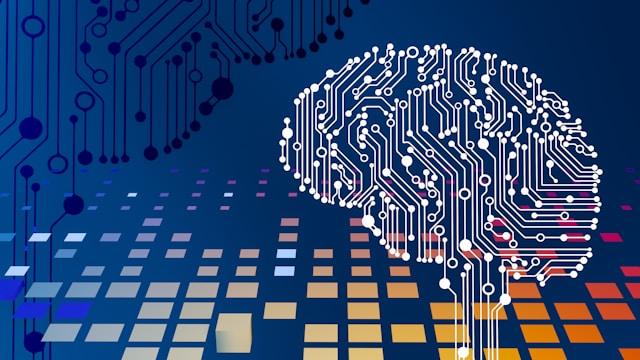How AI and Machine Learning are Revolutionizing the Research Process
The advent of Artificial Intelligence (AI) and Machine Learning (ML) has been nothing short of transformative. Scholars across disciplines are leveraging these technologies to analyze data quickly and accurately, opening new frontiers in knowledge and understanding. The traditional research process, often laborious and time-consuming, is evolving into a more efficient and dynamic practice thanks to the computational power of AI and ML. For example, students who turn to specialized services with requests such as "Write my paper for me" can receive academic papers much faster, thanks to AI.
One of the most significant changes is in data analysis. Where researchers once manually sifted through data, AI algorithms can now process and analyze vast datasets in a fraction of the time. This capability accelerates the research timeline and enables the handling of more complex data structures, leading to richer insights and findings. Furthermore, ML algorithms, with their ability to learn and improve over time, are continually enhancing the quality of analysis, making research outcomes more accurate and reliable.
Another area witnessing profound change is a literature review and hypothesis generation. AI tools can scan through thousands of relevant documents, efficiently summarizing content and identifying research gaps. This not only aids researchers in building a solid foundation for their studies but also fosters innovation by highlighting less explored or entirely new avenues of investigation. The impact of these technologies on the research process is clear: they are making academic inquiry faster, smarter, and more inclusive.
Benefits of Using AI and Machine Learning in Academic Research
The integration of AI and ML into academic research brings a host of advantages that extend beyond speed and efficiency. These technologies are democratizing research, making it accessible to a broader range of scholars, including those with limited resources. AI and ML tools, available through various platforms and software, reduce the need for extensive manpower and financial investment in data analysis, leveling the playing field for researchers worldwide.
Enhanced accuracy and objectivity in research findings stand out among AI and ML's benefits. By minimizing human error and bias, these technologies ensure that conclusions drawn from data are more reliable and valid. This is particularly crucial in fields where precision is paramount, such as the medical and scientific domains, where research outcomes can influence public health policies and practices.
Moreover, AI and ML foster interdisciplinary collaboration, breaking down silos between different areas of study. By providing a common set of tools and methodologies, these technologies encourage researchers from diverse fields to collaborate on complex problems, leading to innovative solutions that might not emerge within the confines of a single discipline.
Examples of AI and Machine Learning Applications in Different Research Fields
In the health sciences, AI and ML are revolutionizing the way researchers understand diseases and develop treatments. For example, AI-driven models are being used to predict disease outbreaks, analyze genetic information to personalize medicine and improve diagnostic accuracy through image recognition technologies. These applications not only enhance the effectiveness of medical interventions but also promise to make healthcare more proactive and preventative.
The field of environmental science is another area witnessing the transformative power of AI and ML. Researchers use these technologies to model climate change scenarios, track biodiversity loss, and optimize natural resource management. AI algorithms can process satellite imagery and sensor data to monitor deforestation, glacier retreat, and urban expansion, providing valuable insights for conservation efforts and policy-making.
In the social sciences, AI and ML tools are opening new avenues for analyzing human behavior and societal trends. From sentiment analysis of social media data to predictive modeling of economic patterns, these technologies are enriching our understanding of complex social dynamics. By uncovering patterns and correlations in large datasets, AI and ML are helping social scientists formulate more nuanced theories and policies that reflect the intricacies of human life.
Challenges and Limitations of Using AI and Machine Learning in Research
Despite their potential, the application of AI and ML in academic research is not without challenges. Data privacy and ethical considerations are at the forefront, especially when dealing with sensitive information. Researchers must navigate the fine line between leveraging data for insight and respecting individual privacy rights, a task that requires careful ethical scrutiny and robust data governance protocols.
Another significant challenge is the "black box" nature of some ML algorithms, which can make the decision-making process opaque and difficult to interpret. This lack of transparency can undermine the credibility of research findings if the rationale behind conclusions is not fully understandable. Ensuring that AI and ML models are explainable and their outcomes interpretable is crucial for maintaining trust in academic research.
Tools and Resources for Incorporating AI and Machine Learning in Academic Research
Fortunately, a growing ecosystem of tools and resources is making AI and ML more accessible to researchers across disciplines. Open-source platforms like TensorFlow and PyTorch offer powerful libraries and frameworks for developing ML models, supported by extensive documentation and active user communities. These platforms lower the barrier to entry for researchers new to AI and ML, providing a foundation for learning and experimentation.
Cloud-based services, such as AWS Machine Learning and Google Cloud AI, provide scalable computing resources and pre-built models that researchers can use to analyze data without investing in expensive hardware. These services offer flexibility and ease of use, allowing scholars to focus on their research questions rather than the technicalities of model development.
Conclusion
AI and ML are reshaping academic research, offering tools that enhance efficiency, accuracy, and collaboration. While challenges remain, particularly around ethics, transparency, and accessibility, the potential benefits of these technologies are immense. As scholars continue to explore and innovate, the future of academic research looks brighter and more promising than ever.

